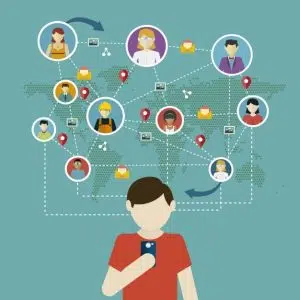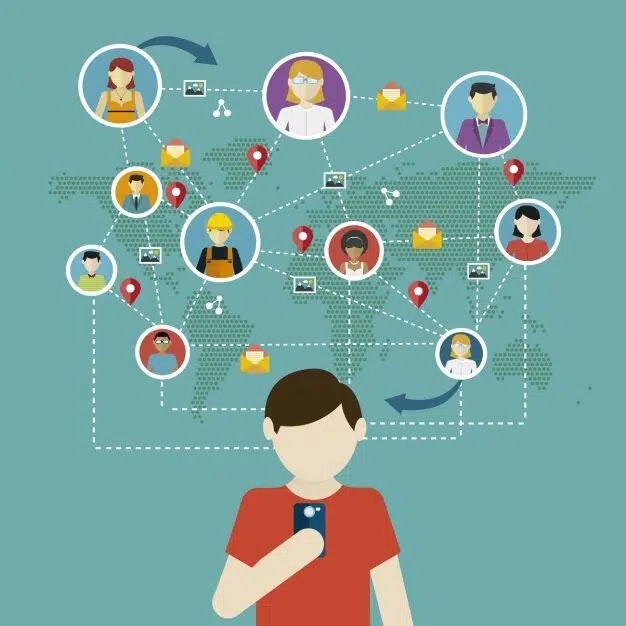In the history of Best phone systems and networks, 2030 represents a turning point that ushers in unparalleled connectedness and technical advancement. Transitioning to this future landscape, cutting-edge developments in this environment promise to completely change how we interact with the digital world and communicate.

-
Quantum Transition in Interconnectivity:
The emergence of innovative communication technologies has changed the environment for connection. Transitioning into this new era, utilizing the ideas of quantum physics, quantum communication now offers almost impenetrable and instantaneous data transfer. By 2030, people will be able to connect with ease, security, and speed beyond what is possible with conventional networks.
-
Networks using 6G:
Building on the success of 5G, 6G networks are now the foundation of the infrastructure used for communication. Transitioning into this advanced era, with very low latency and mind-blowing speeds, 6G networks redefine what is feasible. These networks, moreover, provide users with unmatched connections, enabling everything from realistic holographic conversations to immersive augmented reality experiences.
-
Virtual Interaction Enhanced by AI:
Artificial intelligence (AI) has improved virtual interactions and is now a fundamental component of phone systems. Additionally, voice assistants powered by AI have developed into intelligent beings who can recognize emotions in context and even anticipate the requirements of their users. As a result, conversations flow easily and provide a thoughtful, individualized communication experience.
-
Integration of Extended Reality (XR):
In 2030, phone systems will be able to smoothly include Extended Reality (XR), combining the real and virtual worlds. Technologies like augmented reality (AR) and virtual reality (VR) provide immersive communication experiences. These experiences range from interactive holographic presentations to virtual meetings in far-off places.
-
Secure and Decentralized Communication
Blockchain technology-driven decentralized communication protocols have entirely changed the security environment. End-to-end encryption is now available to users, guaranteeing the confidentiality and security of their communications. Additionally, decentralization reduces the possibility of central points of failure, resulting in a robust and reliable infrastructure for communication.
-
Ecosystems of Personalized Communication:
Phone systems have developed into ecosystems of customized communication that adjust interactions based on user preferences. To provide customized services, such as curated content suggestions and adaptive communication interfaces, advanced analytics, and machine learning algorithms to evaluate communication patterns.
-
Eco-Friendly Communication Strategies:
Phone systems and networks give eco-friendly techniques priority to global sustainability objectives. Technology will be more environmentally friendly and sustainable in the future because of recyclable materials, energy-efficient hardware, and ethical production practices.
8.Cybersecurity Hardiness:
Due to the growing threat of cyberattacks, strong cybersecurity measures are needed. Through self-healing security procedures, biometric authentication, and advanced threat detection, phone systems are protected from emerging cyber threats.
-
Harmonious Combination of Quantum Information:
Integration of quantum computing improves phone systems’ processing power, allowing for previously unheard-of speeds for complicated calculations and data analysis. With the use of this technology, communication may now reach new heights. It can directly distribute quantum keys securely and solve challenging computing problems instantly.
-
Ecosystems of Global Collaboration:
In 2030, phone systems will support international ecosystems of cooperation. Users may easily interact with people from different geographic regions for commercial or personal purposes, removing obstacles to communication and promoting a genuinely integrated society.
In 2030, when phone systems and networks enter a new era, technology’s revolutionary force will still change how we communicate. Additionally, these developments, which prioritize speed, security, customization, and sustainability, hold up the prospect of an infinitely communicative future that unites people in ways that were before unthinkable.
-
Predictive networking powered by AI:
Artificial intelligence-powered predictive networking will be on best phones System and network in 2030. Moreover, these systems forecast problems before they arise by examining past data, user behaviour, and network circumstances. Consequently, maintenance and optimization carried out proactively provide a high-quality and dependably dependable communication experience.
-
Integration of Smart Ecosystems:
Phone systems communicate with various IoT devices to form responsive and intelligent surroundings, blending invisibly into innovative ecosystems. Additionally, the phone serves as the primary control centre for all linked areas of contemporary life, from automating repetitive jobs to modifying the temperature of your house according to your preferences.
-
Customized Health Tracking:
Health-monitoring functions are integrated into phone systems in ways that go beyond fitness applications. Moreover, by 2030, phones will have sophisticated sensors and AI algorithms to track various health indicators. Consequently, real-time input on well-being is provided to users, adding a new level of personalization to healthcare.
-
Awareness of the Environment:
The operation and design of phone systems must take the environment into account. Additionally, manufacturers reduce electronic waste and lessen the environmental effects of technology by prioritizing recyclability, energy-efficient components, and sustainable sourcing.
-
Initiatives for Global Connectivity:
By supporting global connection projects, best phone systems and help bridge the digital gap in rural and underdeveloped regions. Additionally, the objective is to guarantee that everyone, wherever they are, has access to dependable communication networks using creative solutions. This includes low-earth orbit (LEO) satellites and community-driven connection initiatives.
-
Online Centers for Collaboration:
Virtual collaboration hubs redefine remote work and team collaboration. Additionally, by using augmented reality (AR) and virtual reality (VR) technology, these hubs let teams collaborate beyond geographical boundaries. Consequently, they facilitate meetings, brainstorming sessions, and shared virtual workspaces.
-
Extremely Low Energy Usage:
Ultra-low energy usage is a design goal for phone systems in 2030. Furthermore, devices may run for extended periods on a single charge because of advancements in battery technology and energy-efficient components. Consequently, this benefits user convenience and environmental sustainability.
-
Integration of Biometric Security:
In phone systems and 2030, biometric security is crucial, providing improved ways of identification, such as voice biometrics, face recognition, and retinal scanning. Additionally, this provides an extra degree of security for confidential messages and data and guarantees secure access to devices.
-
Inclusivity and Digital Citizenship:
Phone systems contribute to the advancement of inclusion and digital citizenship. Moreover, to accommodate users of varying abilities, user interfaces are developed with accessibility in mind.
Additionally, phone System features include digital literacy programs, equipping consumers with the skills they need to thrive in the digital age.
-
Constant Updates Via the Air:
Phone systems and network in 2030 seamlessly include over-the-air upgrades, guaranteeing that handsets are always outfitted with the newest features, security fixes, and performance improvements.
Moreover, this method extends the lifespan and sustainability of electrical gadgets and keeps phones current.
The confluence of these tendencies provides an intelligent, user-centric, and networked communication experience as we enter this dynamic age of communication technology in 2030.
Furthermore, in addition to offering more sophisticated features, phone systems and networks should benefit our everyday lives and the global community in the future.
Conclusion:
In summary, quantum leaps in security, connection, and personalization are anticipated in communication technology by 2030. Users may anticipate never-before-seen immersive experiences thanks to 6G networks and AI-driven interactions. The focus on diversity, decentralized communication, and sustainability shows a responsible and progressive strategy. The goal of the convergence of cutting-edge technologies as we step into this dynamic era is to redefine global connection and guarantee a digital future that is smooth, secure, and environmentally friendly.



